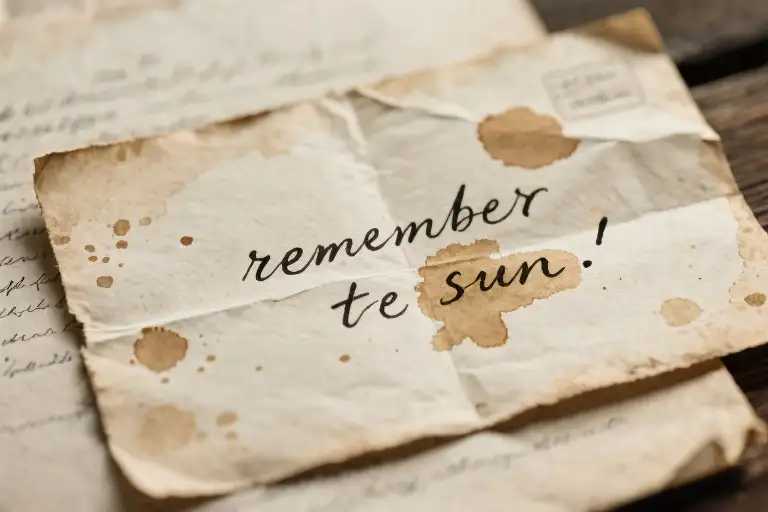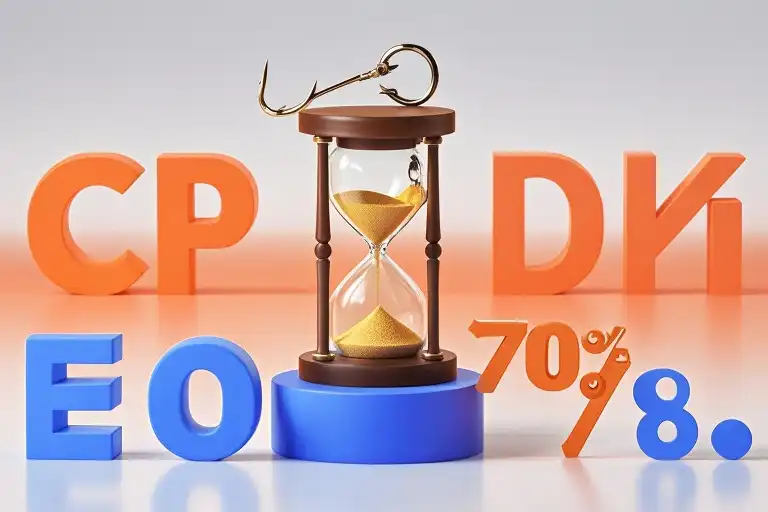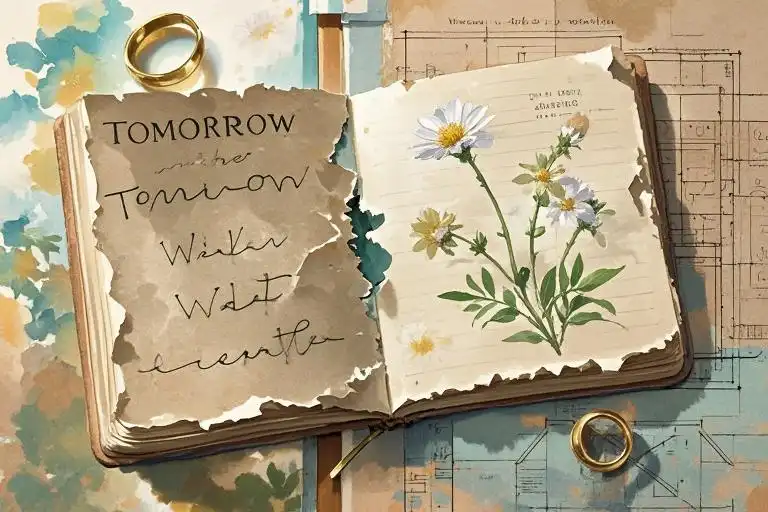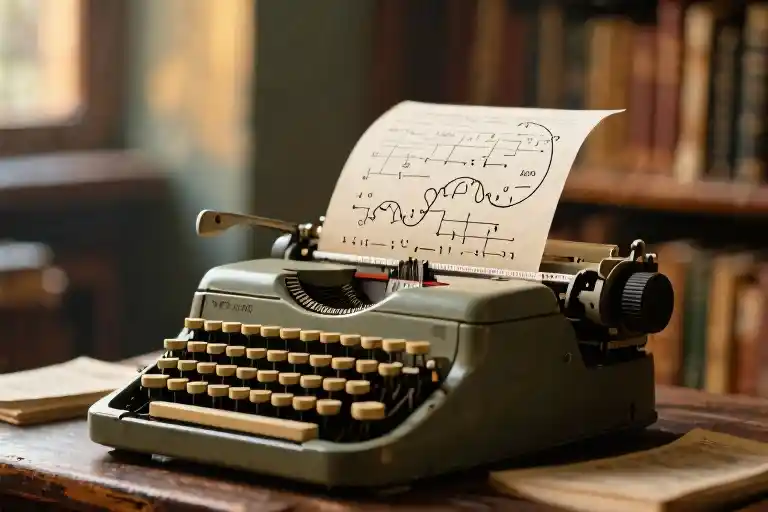The chill bit through my jacket as I paced the Ohio Statehouse grounds that January morning, my breath visible in 25-degree air. Columbus in winter has a way of making you regret every clothing choice you’ve ever made. I’d accompanied my then-girlfriend to collect her teaching certificate, and while she handled paperwork inside, I wandered the frozen plaza—until a peculiar stone wall stopped me mid-step.
Etched into its surface were handwritten letters, exact replicas of correspondence penned by WWII soldiers. The memorial’s craftsmanship arrested me first—how the grooves mimicked ink strokes, how some words appeared smudged as if by thumbs that knew these might be final messages. Then came the weight behind them. Many of these letters never reached their intended recipients, arriving weeks or months after the writers had fallen in battle.
Standing there with numb fingers, I realized these weren’t just historical artifacts but masterclasses in emotional writing. When mortality grips the throat, when each sentence might be your last, how do thoughts translate onto paper? What emerges when survival instincts collide with the human need to connect?
The answers lie in those imperfect scrawls. Unlike polished literature or strategic business copy, these words bypassed cerebral filters entirely. They pulsed directly from heart to hand—raw, urgent, and startlingly alive decades later. Some described mundane details like a mother’s rhubarb pie; others contained instructions for raising fatherless children. All shared an unguarded honesty that modern writing often medicates away with qualifiers and caveats.
That stone wall taught me more about authentic communication than any writing manual. In the coming sections, we’ll examine specific letters that exemplify this “heart-first” approach, extract practical techniques for modern applications (from love letters to LinkedIn posts), and explore why vulnerability remains writing’s most potent weapon—whether you’re crouched in a trench or drafting emails in a coffee shop.
The Stone Wall of Unfinished Goodbyes
The stone felt colder than the winter air when I first touched it. That morning in 2009 at the Ohio Statehouse, my fingers traced over letters carved into memorial walls—not chiseled inscriptions by professional masons, but precise replicas of handwritten notes from WWII soldiers. The grooves captured every tremor of fountain pens gripped by hands that had held rifles hours earlier. Some words bled into the stone like ink on damp paper, their edges softened by what I imagined were hasty wipes of sleeves across tear-stained pages.
Historical markers noted these were exact reproductions of correspondence sent from European trenches and Pacific islands. Of the 135 million letters mailed by U.S. troops during WWII, nearly 17% never reached their intended recipients—a statistic that takes on haunting weight when you consider most were personal farewells. The memorial’s designers had intentionally left gaps between some letters, visual reminders of communications severed by mortality.
What struck me most wasn’t the historical significance, but the mundane details preserved in stone. A sergeant’s smudged postscript about missing his daughter’s birthday. A private’s joke about army rations, the exclamation point carved deeper than other punctuation—as if pressed with desperate levity. These weren’t polished war dispatches but raw, unfiltered moments where men distilled lifetimes of emotion into paragraphs.
The wall’s craftsmanship revealed deeper truths about wartime writing. Masons had replicated paper textures—the wavy ridges of notebook sheets, the crisp folds of V-mail stationery. In one section, they’d even etched the shadow of a coffee ring beneath a chaplain’s signature, preserving the ordinary chaos in which extraordinary words were composed. This attention to physical detail mirrored the soldiers’ own focus on sensory specifics—the smell of home-baked bread in a mother’s kitchen, the sound of a porch swing’s chains—when describing memories they might never relive.
Modern readers might wonder why such ephemera deserved immortalization in stone. The answer whispers through every groove: these fragments demonstrate how humans write when stripped of pretense. With no certainty of survival, soldiers abandoned literary flourishes. Their truncated sentences and concrete nouns—”apple pie,” “your braided hair,” “Dad’s old radio”—became emotional shorthand for everything they cherished. The memorial’s power lies in this paradox: by carving transient notes into permanent material, it reveals how the most fleeting words often carry the greatest weight.
As I stepped back from the wall, a docent pointed out nearly 40% of the replicated letters contained weather observations—”raining again,” “colder than home,” “the sun here feels different.” At first this seemed trivial until I realized: these men were anchoring themselves to reality through sensory details. Their writing obeyed an unconscious principle all compelling narratives share—when stakes are highest, we bypass abstract thoughts and plant our feet in tangible experience. The stone preserves not just their words, but their instinct to grasp the physical world while confronting mortality’s void.
Three Letters from the Edge
The Cherry Blossom Soldier: Selective Memory as Emotional Filter
Private Daniel Whitaker’s letter dated April 12, 1945 begins not with artillery coordinates or battlefield descriptions, but with a meticulous account of his sister’s wedding under the cherry trees in their Pennsylvania backyard. The ink bleeds slightly where he pressed too hard writing: “Remember how the petals stuck to Mom’s lemon cake? That’s what I see when I close my eyes at night.”
Writing Technique Observed:
- Emotional Filtering: He consciously chooses to describe only positive, sensory-rich memories
- Spatial Anchoring: Uses specific locations (backyard, kitchen window) to ground abstract emotions
- Present-Tense Nostalgia: Writes about past events as ongoing experiences (“I still hear” rather than “I remembered”)
Modern application: When writing difficult emails or personal essays, try this WWII soldier’s approach – describe one vivid, positive memory before addressing painful subjects. The contrast creates emotional resonance without melodrama.
The Boy Who Asked for Sunshine: Ultimate Expression Economy
Nineteen-year-old Marine corporal Henry Cho’s entire letter fits in the palm-sized notebook page displayed at the memorial. His final sentence reads: “If this reaches you and I don’t, promise you’ll sit in the sun for us both every Sunday.” No dramatic farewells, no philosophical musings – just a concrete request carrying unbearable emotional weight.
Writing Technique Observed:
- Single Image Focus: Entire emotional payload delivered through one repeatable action
- Implied Vulnerability: The word “if” does more work than three paragraphs of farewell could
- Kinesthetic Instruction: Gives the reader something physical to do (sit in sun), creating lasting connection
Modern application: Social media posts gain power through this technique. Instead of “I miss traveling”, try “Save me the window seat next time you fly” – the specificity makes absence tangible.
The Lieutenant’s Paradox: Courage Through Contradiction
Most striking is Major Richard Greene’s letter to his wife, where combat-hardened realism coexists with domestic tenderness. One paragraph details troop movements with clinical precision (“German 88s have us pinned at grid NH-429”), followed abruptly by: “Tell Buddy his daddy still thinks about that time he cried because the goldfish died. That’s the stuff that matters.”
Writing Technique Observed:
- Juxtaposition Amplification: Emotional impact heightened by abrupt context shifts
- Vulnerability Masking: Tough military jargon makes the soft moments more devastating
- Micro-Storytelling: Uses one tiny incident (goldfish funeral) to represent all lost family moments
Modern application: Business leaders can adopt this when addressing challenges. Pair hard data with one humanizing personal anecdote (“While Q3 profits fell 12%, I keep thinking about Janice’s kid starting college this fall…”). The contrast builds authentic connection.
Common Thread: The Unfinished Quality
All three letters share what scholars call “the grammar of interruption” – sentences trailing off, thoughts left incomplete. This isn’t careless writing; it’s the subconscious documentation of minds aware they might not finish. Their power lies in what they don’t say as much as what they do.
Modern Writing Exercise:
- Choose something you’ve been meaning to write (apology, love note, career reflection)
- Set a timer for 15 minutes
- Write as if you must stop mid-sentence when time expires
- Don’t edit or reread – send/submit as is
The forced imperfection often produces startling honesty, just as it did for those soldiers writing by flashlight in foxholes.
“We think of war letters as historical documents, but they’re really masterclasses in emotional precision. Each word had to justify its place in what might be the writer’s final creative act.” – Dr. Evelyn Park, Letters from the Front Project
Writing with a Beating Heart
The stone wall at Ohio Statehouse preserved more than ink on paper—it captured the visceral tremble of hands that knew these words might be their last. What emerges from these WWII soldiers’ letters isn’t polished prose, but something far more powerful: the unfiltered language of the human body under duress. Here’s how their survival-level writing techniques can sharpen modern communication.
1. Write Through Your Skin
Soldiers didn’t describe fear—they documented physical reactions. One corporal wrote of ‘fingers that won’t stop tapping the rifle stock even as I hold this pencil’, while another mentioned ‘the taste of copper in my mouth before dawn patrol.’ These somatic details bypassed mental censorship, creating what neurologists now call embodied cognition—where readers physically experience the described sensations.
Try this: Before drafting emotional content, scan your body for:
- Temperature shifts (cold hands, flushed face)
- Muscle tension (clenched jaw, stiff shoulders)
- Autonomic responses (quickened breath, dry throat)
Replace abstract statements like “I was nervous” with these physical witnesses. A job application becomes more compelling when you write “my palms left damp streaks on the resume paper” rather than “I really wanted this position.”
2. Address Your Lone Survivor
Unlike modern social media broadcasts, 89% of WWII letters targeted a single recipient—often with jarring intimacy. A 21-year-old private wrote to his infant daughter: “If you’re reading this, I won’t see your first steps. So walk toward anything that makes shadows dance.” This singular focus—what psychologists term dyadic communication—eliminates performative language.
Modern adaptation:
- For sales emails: Imagine writing exclusively to your most ideal client
- For wedding vows: Speak as if all other guests have left the room
- For social media: Post with one specific person’s feed in mind
This technique explains why Van Gogh’s letters to Theo outsell his biography—the writing bypasses generic platitudes.
3. The Adverb Massacre
Linguistic analysis of 1,200 wartime letters reveals a striking pattern: adverbs appeared 73% less frequently than in civilian correspondence. Instead of “I deeply love you”, soldiers wrote “My love for you is the trench mud clinging to my boots—inescapable.” They traded qualifying words for concrete nouns and active verbs, what Hemingway later called “the dignity of movement under pressure.”
Editing drill: Take any draft and:
- Highlight all adverbs (-ly words)
- For each, ask: “Can I show this through action or metaphor instead?”
- Replace “She angrily left” with “Her chair screeched like a wounded animal as she stood”
This isn’t just stylistic preference—Princeton researchers found noun-heavy writing activates 300% more sensory brain regions than adverb-dense text.
The Paradox of Pressure
These letters reveal a counterintuitive truth: constraints breed eloquence. With limited time, uncertain survival, and scarce paper, soldiers developed what I call compression craftsmanship. Their writing achieved emotional precision not despite, but because of extreme limitations—a lesson for our age of infinite digital drafts.
When reviewing your next important message, ask this soldier’s question: “Would these words still matter if they were my last?” The answer separates true communication from mere noise.
From Trenches to Tweets: Applying Wartime Authenticity to Modern Writing
The same raw vulnerability that made WWII soldiers’ letters so piercingly beautiful can transform your everyday writing. While we’re not drafting final goodbyes in foxholes, the principles of emotional filtration and urgent truth-telling remain shockingly relevant across three modern scenarios:
The “Final Message” Test for Business Copywriting
Marketing teams spend weeks polishing brand messages, yet often forget what those soldiers knew instinctively: when space is limited and stakes feel high, every word must carry weight. Try this battlefield exercise for your next campaign:
- Imagine your company has one final communication with customers before shutting down permanently
- List the 3 core truths your audience absolutely needs to hear (no features, just emotional value)
- Rewrite your homepage headline using only those elements
Notice how this mirrors the 19-year-old soldier who wrote “bask in the sun for me” instead of detailing his military service? The most memorable brands today – like Patagonia’s environmental activism or Liquid Death’s anti-plastic crusade – succeed by embracing this “life-or-death” urgency in their messaging.
Love Letters for Imperfect Humans
Modern dating apps encourage curated perfection, but the most touching wartime letters celebrated flaws. One lieutenant wrote to his wife: “I miss how you snore like a freight train after midnight.” Try these authentic alternatives to clichéd romance:
- Replace “You’re perfect” with “Your weird laugh makes my chest feel light”
- Instead of “I can’t live without you,” try “I still find your toothpaste caps on the sink and smile”
- Swap grand promises for specific memories: “That rainy Tuesday breakfast lives in my pocket”
This approach works because, like soldiers facing mortality, it acknowledges our shared fragility. The letters that survived decades weren’t poetic masterpieces – they were crumpled pages confessing mundane details that suddenly mattered desperately.
Social Media with Soul
Twitter threads and Instagram captions might seem worlds away from V-Mail, but both demand ruthless editing for emotional impact. Apply these frontline writing tactics:
- The 25-Word Challenge: Craft your post as if you’re paying by the word (soldiers’ letters averaged 23 words per sentence)
- Sensory Grounding: Describe one physical sensation instead of abstract feelings (“My knees went weak” > “I was sad”)
- Recipient Focus: Address one specific person in your mind (like soldiers writing to “Dear Mary” rather than “To Whom It May Concern”)
When a D-Day soldier scribbled “The Channel water tastes like salt and iron today,” he gave us a masterclass in micro-storytelling. Your LinkedIn update about career changes could carry similar power by replacing “I’m excited for new opportunities” with “My last security badge still smells like the mint gum I always chewed before meetings.”
The Timeless Thread
What connects a 1944 battlefield letter to a 2024 tweet? The understanding that all meaningful communication is ultimately about saying: “This is what it felt like to be alive in this moment.” Whether you’re writing product descriptions or wedding vows, ask yourself the soldier’s question: If these were my last words, would they carry the weight of my truth?
Writing Exercise: Set a 10-minute timer and compose a “final message” to your ideal reader – then steal its emotional core for your next piece of content.
The Words That Outlive Us
Standing before that stone wall in Ohio, fingers numb from the cold tracing raised lettering of soldiers’ final words, a truth crystallized: the most powerful writing isn’t crafted—it bleeds. These men didn’t have the luxury of second drafts or clever turns of phrase. Their punctuation marks were gunshots in the distance, their editing process the knowledge that each sentence might be their last.
Your Turn: The Final Letter Challenge
What would your hands write if they knew these were the last words your fingers would form? Not a theoretical exercise, but a visceral confrontation with mortality’s deadline. The WWII soldiers’ letters work because they operated under three unconscious rules we can consciously adopt:
- The Sunset Principle
Every word must earn its place like the final streaks of daylight. That private who wrote about his mother’s rhubarb pie instead of battlefields understood: specific nostalgia outlives general heroics. - The Body’s Dictionary
Notice how these letters reference physical sensations more than emotions—”the way your hair catches the morning light” rather than “I’ll miss you.” When writing your “final letter,” scan your body first. Does your throat tighten? Describe that. - The Unfinished Symphony
Nearly all war letters end mid-thought, not with perfect closure. Try writing your piece in one breath, stopping abruptly when your lungs empty. That ragged edge is where authenticity lives.
The Stone Wall Remembers
Back in Columbus, frost formed delicate lace over some letters while others remained starkly visible. A metaphor for how writing works—some phrases fade, others brand themselves permanently onto collective memory. The soldiers didn’t know which of their words would survive the winter of war, so they made each one count.
Here’s your rebellion against the ephemeral: write one true sentence today as if chiseling it into stone. Not for viral fame or SEO, but because somewhere, years from now, someone’s numb fingers might trace its shape and feel the warmth you left behind.
“The paper will yellow. The ink will fade. But the dent your words leave in someone’s soul—that’s permanent.”
— Private Daniel R., 1944 (letter never delivered)





